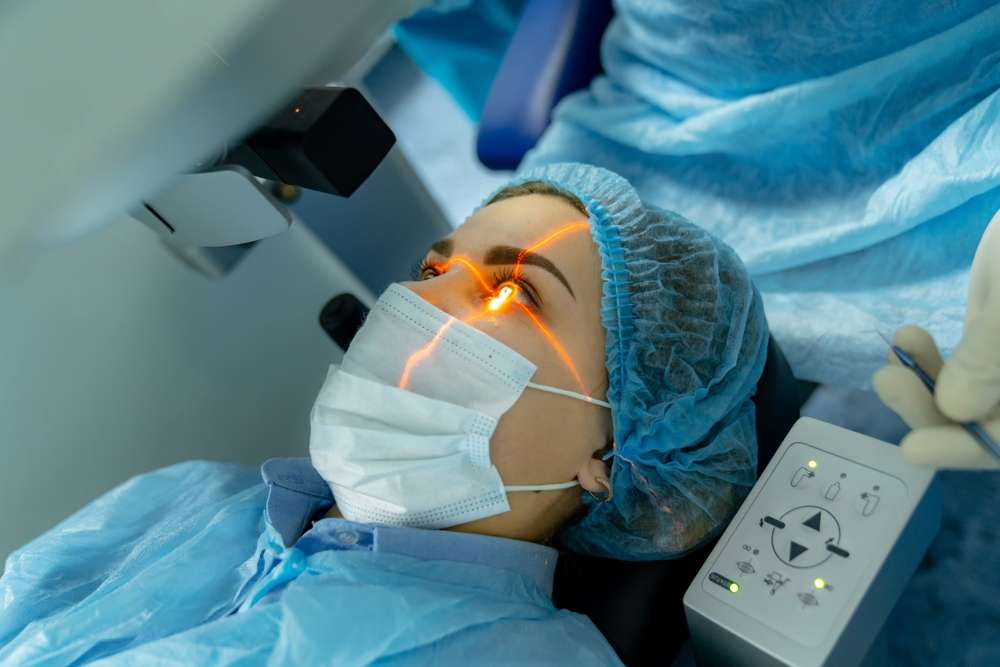Step-by-Step LASIK Eye Surgery Guide: Everything You Need to Know for Vision Correction in 2025
LASIK (Laser-Assisted In Situ Keratomileusis) eye surgery has revolutionized vision correction for millions of people worldwide. This procedure reshapes the cornea using laser technology to correct refractive errors such as nearsightedness, farsightedness, and astigmatism. As we move into 2025, advancements in LASIK technology continue to improve outcomes and recovery times. This comprehensive guide walks you through what to expect before, during, and after the procedure to help you make an informed decision about vision correction.

What is LASIK Surgery?
LASIK surgery is a type of refractive surgery that permanently changes the shape of the cornea, the clear front part of your eye. This outpatient procedure uses a specialized laser to precisely remove corneal tissue, reshaping it to improve how light focuses on your retina. The goal is to reduce or eliminate dependence on glasses or contact lenses by correcting refractive errors:
-
Myopia (nearsightedness): When distant objects appear blurry
-
Hyperopia (farsightedness): When close objects appear blurry
-
Astigmatism: When both near and distant objects appear distorted
Modern LASIK incorporates wavefront technology, which creates a detailed map of your eye’s unique imperfections, allowing for highly personalized treatment. The procedure has a high success rate, with most patients achieving 20/20 vision or better.
Am I a Good Candidate for LASIK?
Not everyone is suitable for LASIK surgery. Ideal candidates typically:
-
Are at least 18 years old (preferably over 21)
-
Have stable vision for at least one year
-
Have appropriate corneal thickness and shape
-
Have refractive errors within the treatable range
-
Have no significant eye health issues like severe dry eye, keratoconus, or cataracts
-
Are not pregnant or nursing
-
Do not have certain autoimmune diseases or conditions that affect healing
A comprehensive pre-surgical evaluation with an ophthalmologist is essential to determine your eligibility. This screening includes corneal mapping (topography), measurement of your prescription, pupil size assessment, evaluation of tear production, and thorough examination of your overall eye health.
Step-by-Step LASIK Eye Surgery Guide
The LASIK procedure follows a structured process that typically takes less than 30 minutes for both eyes:
-
Pre-surgery preparation: On surgery day, your eyes will be examined again to confirm measurements. You’ll receive numbing eye drops, and the area around your eyes will be cleaned. You may also receive medication to help you relax.
-
Creating the corneal flap: The surgeon uses either a microkeratome blade or a femtosecond laser to create a thin flap in your cornea. This flap is then folded back to access the underlying corneal tissue.
-
Corneal reshaping: An excimer laser precisely removes microscopic amounts of corneal tissue according to your pre-programmed treatment plan. For nearsightedness, the cornea is flattened; for farsightedness, the center is steepened; for astigmatism, the cornea is made more spherical.
-
Flap repositioning: After reshaping, the surgeon carefully repositions the corneal flap, which adheres naturally without stitches. The flap serves as a natural bandage, promoting quick healing.
-
Immediate recovery: You’ll rest briefly after the procedure. Your vision will be blurry initially, and you’ll need someone to drive you home. You’ll receive detailed aftercare instructions and eye drops to prevent infection and inflammation.
The procedure itself is painless due to the numbing drops, though you may feel pressure during the creation of the corneal flap. Many patients notice improved vision immediately, though complete stabilization takes several weeks.
LASIK Recovery and Aftercare
Recovery from LASIK is typically quick but requires careful attention to post-operative instructions:
First 24-48 hours:
-
Expect mild discomfort, burning, or itching
-
Your vision may be hazy or blurry
-
Avoid rubbing your eyes completely
-
Use prescribed eye drops exactly as directed
-
Wear protective eye shields while sleeping
-
Rest your eyes and avoid screens
First week:
-
Attend follow-up appointments (typically 24-48 hours after surgery)
-
Continue using prescribed eye drops
-
Avoid swimming, hot tubs, and contact sports
-
Avoid eye makeup and lotions near eyes
-
Use artificial tears for dryness as recommended
First month:
-
Gradual return to normal activities
-
Continue regular check-ups
-
Avoid contact sports without protective eyewear
-
Vision typically stabilizes during this period
Most patients return to work within 1-3 days. Complete healing and vision stabilization typically occurs within 3-6 months, with regular follow-up appointments during this time.
LASIK Costs and Providers in 2025
LASIK eye surgery is considered an elective procedure not typically covered by insurance. The cost varies based on technology used, surgeon experience, and geographic location.
| Provider Type | Average Cost Range (per eye) | Technology Features |
|---|---|---|
| Standard LASIK Centers | £1,500 - £2,000 | Basic wavefront technology |
| Premium Eye Clinics | £2,000 - £3,000 | Advanced wavefront, bladeless technology |
| Teaching Hospitals | £1,200 - £1,800 | Varies by institution |
| Specialized Eye Institutes | £2,500 - £3,500 | Latest technology, experienced surgeons |
Prices, rates, or cost estimates mentioned in this article are based on the latest available information but may change over time. Independent research is advised before making financial decisions.
Many providers offer financing plans to make the procedure more accessible. Some workplaces also offer health savings accounts or flexible spending accounts that can be used for LASIK. When comparing providers, consider the surgeon’s experience, the technology used, and the comprehensiveness of pre- and post-operative care included in the price.
Additional Resources
To make an informed decision about LASIK eye surgery, consider these additional resources:
-
Professional Organizations: The Royal College of Ophthalmologists provides guidelines and information about eye surgery standards in the UK.
-
Patient Reviews: Look for testimonials from actual patients who have undergone LASIK at clinics you’re considering.
-
Consultation Services: Many clinics offer free consultations to discuss your specific needs and determine candidacy.
-
Support Groups: Online forums and local support groups can provide insights from others who have experienced the procedure.
-
Vision Simulators: Some websites offer virtual tools that demonstrate how your vision might improve after surgery.
It’s important to thoroughly research your options and choose a reputable surgeon with extensive experience. Ask about their success rates, complication rates, and the specific technology they use.
Potential Risks and Complications
While LASIK has a high success rate, all surgical procedures carry some risk. Potential complications include:
-
Dry eyes (usually temporary but occasionally persistent)
-
Glare, halos, or double vision, particularly at night
-
Undercorrection or overcorrection of vision
-
Development of visual aberrations
-
Rarely, loss of vision or persistent eye pain
Advanced screening techniques in 2025 have significantly reduced these risks by better identifying unsuitable candidates before surgery. Discussing all potential risks with your surgeon before proceeding is essential.
This article is for informational purposes only and should not be considered medical advice. Please consult a qualified healthcare professional for personalized guidance and treatment.




